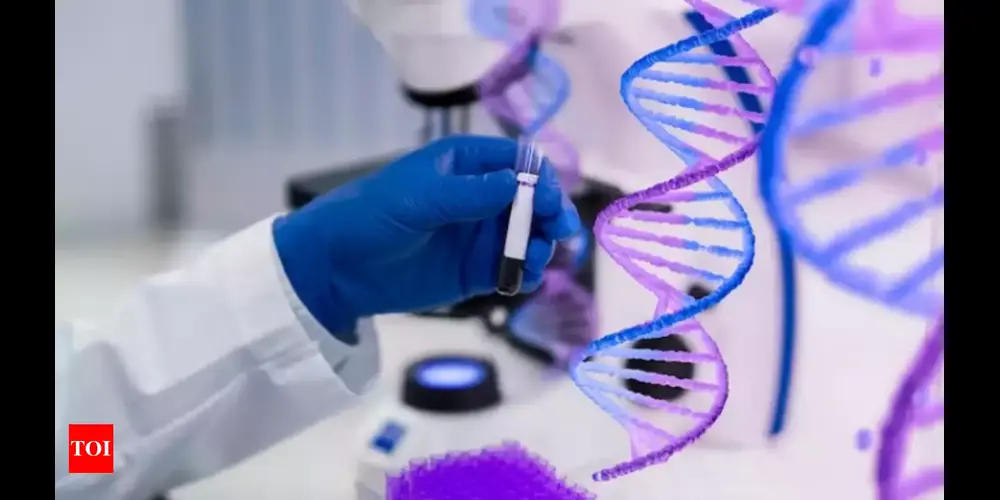Exploring Genetic Roots: Unraveling Ancestral Origins with DNA Ancestry Testing

It may be challenging to navigate the complicated field of genetics. Finding the answers to your family history puzzles, comprehending any health hazards, or just satisfying your curiosity about yourself, you’ll find a wealth of material that is frequently disorganized and unclear. Are you familiar with genetic testing? Ever know of a relative who sent a sample to an online genealogy resource like Face DNA Test? The allure of using genetic testing to discover your heritage with the growing field of DNA testing is gaining popularity. How do these genetic tests function, though? With this post, we will go over the science these firms employ to dissect your lineage in this essay.
Chromosomes, genes, or proteins are analyzed as part of genetic testing to determine a person’s genetic makeup or illness risk. Genetic testing is often carried out with DNA from blood, saliva, or other body tissues and can provide information about ancestry, the chance of contracting particular diseases, and unique characteristics. A court order paternity test may be required to determine your ancestral origin. Healthcare providers need to know these genetic insights to effectively diagnose illnesses, personalize treatment regimens, and assist patients in making decisions about their health and family planning.
Ancestry and DNA
Our DNA is used in genetic testing to determine our ancestry. Four distinct molecules make up DNA: adenine (A), thymine (T), guanine (G), and cytosine (C). A, T, G, and C sequences can be found in segments of a gene, which is the functional unit of DNA. Every cell in our body contains 23 pairs of chromosomes, which are the building blocks of genes. DNA is a molecular instrument used to track our ancestors since each parent contributes half of our chromosomes to us.
Small DNA segments known as markers are sequenced during genetic testing as an alternative to sequencing every gene in an individual’s genome. Our DNA has a variety of markers that can reveal various aspects of our ancestry. A sex chromosome is a single pair of chromosomes that we receive from our parents. This chromosome, as its name implies, controls our sex. Males receive an X and a Y sex chromosome from their father and mother, respectively, whereas females have two X sex chromosomes. This indicates that every male ancestor in his paternal line will have an identical Y chromosome. Therefore, all you need to do to find a male ancestor on your paternal side is to obtain a “Y-DNA test.” This test will search your Y chromosome for short sequences and attempt to match them to other DNA markers to classify you into a certain group known as a “haplotype,” or your genetic heritage.
DNA Ancestry Test Types
DNA testing comes in several forms, each with a distinct function:
Genomic sequencing: This method examines the full genome to identify genetic changes and may be applied to a wide range of health assessments. Targeting certain genes or gene mutations associated with illnesses or disorders is known as gene panel testing.
Testing for mitochondrial DNA: This procedure examines the DNA contained in mitochondria and can reveal details about a mother’s ancestry.
Y-chromosome testing: This method examines the Y chromosome to determine characteristics unique to men and trace paternal descent.
Single-gene testing: Targets a single gene to identify or forecast a particular genetic disorder.
DNA Ancestry testing: Identifies ancestry and establishes ties to certain populations or geographic areas. A DNA test by face is also available for discovering ancestry.
These tests can be used in various contexts, including forensic analysis, medical diagnosis, family history research, and more. Knowing which kind of DNA test to employ relies on the precise data or understanding being sought.
Ancestry test Accuracy
Significant genetic ties and wide ethnic origins may usually be reliably determined by DNA ancestry testing. However, accuracy may be hampered when identifying particular locations or distant family members. The accuracy of the results can be impacted by variables, including the technique used and the quantity and variety of the testing company’s database of the DNA sample. To guarantee the most accurate findings possible, it is advised to choose a trustworthy organization that has a sizable and varied database in addition to openly disclosing the details of their testing procedures.
In conclusion, although privacy issues are real, they may be significantly reduced by carefully selecting a reliable DNA testing firm like Face DNA Test, learning about their privacy practices, and making use of the available control choices. With confidence and peace of mind, you may receive the intriguing insights of genetic testing by working with a reputable firm that respects privacy and security.
Read More From Techbullion





